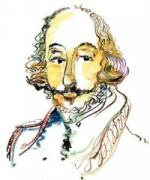|
This section contains 17,325 words (approx. 58 pages at 300 words per page) |

|
SOURCE: 'The Father and the Bride in Shakespeare," in PMLA, Vol. 97, No. 3, May, 1982, pp. 325-47.
Here, Boose explores the phases of the marriage ceremony—separation, transition, and reincorporation—as a pattern for the father-daughter relationship.
The aristocratic family of Shakespeare's England was, according to social historian Lawrence Stone, "patrilinear, primogenitural, and patriarchal." Parent-child relations were in general remote and formal, singularly lacking in affective bonds and governed solely by a paternal authoritarianism through which the "husband and father lorded it over his wife and children with the quasi-authority of a despot" (Crisis 271). Stone characterizes the society of the sixteenth and early seventeenth centuries as one in which "a majority of individuals . . . found it very difficult to establish close emotional ties to any other person" (Family 99)1 and views the nuclear family as a burdensome social unit, valued only for its ability to provide the means of patrilineal descent. Second...
|
This section contains 17,325 words (approx. 58 pages at 300 words per page) |

|


